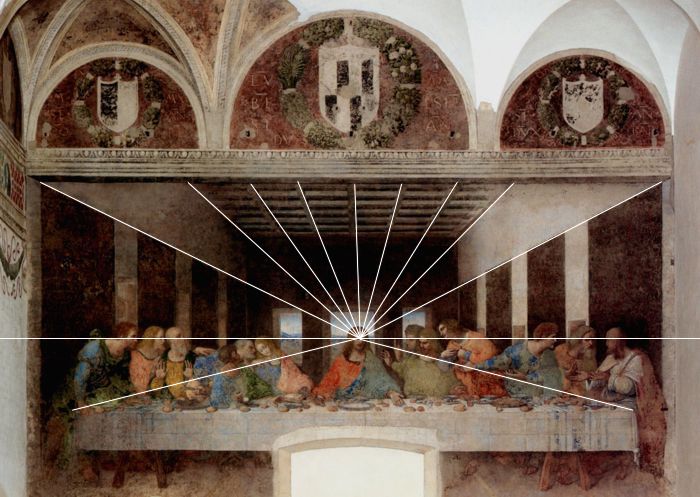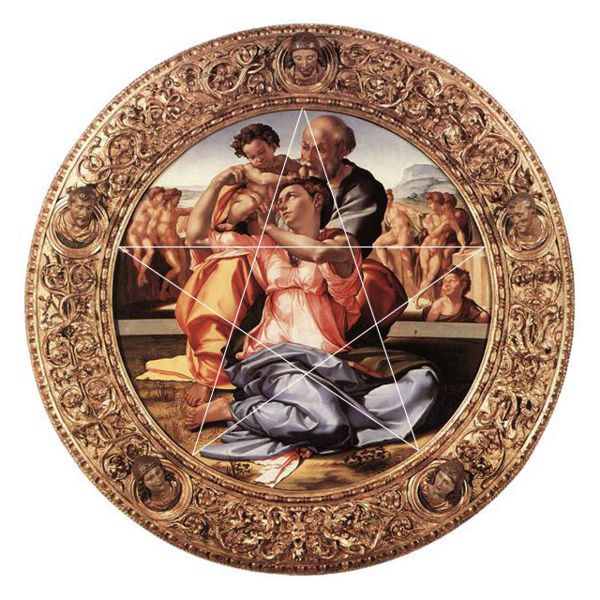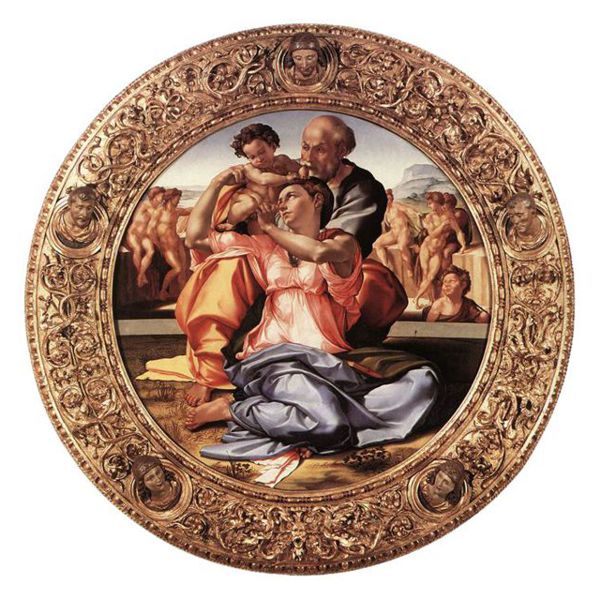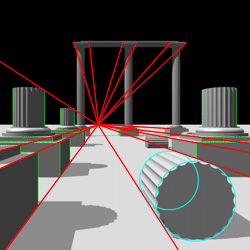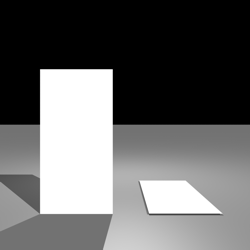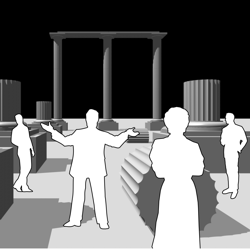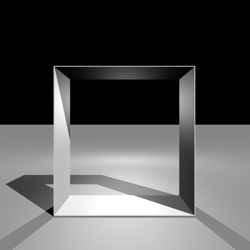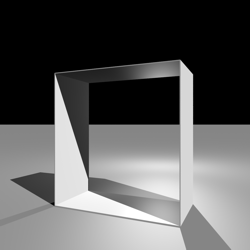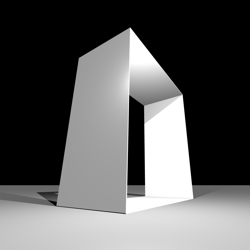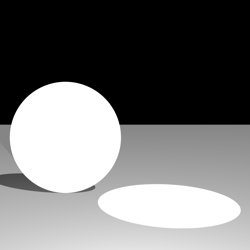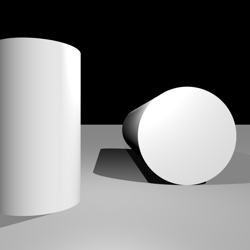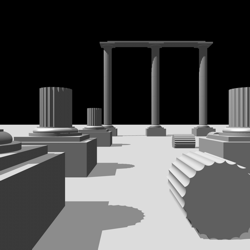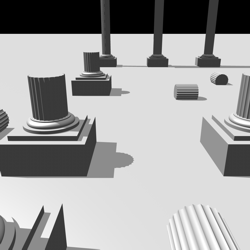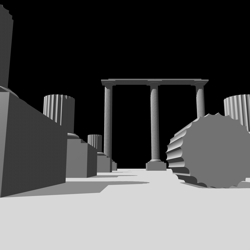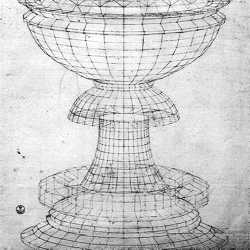Perspective Drawing - Geometry in Art
Perspective Drawing is an application of geometry that artists use to organize the scale of objects and space in a picture.
LEONARDO DA VINCI (1452-1519)
'The Last Supper', 1494-98 (tempera on gesso, pitch and mastic)
(Click on the flip icon to view)
Perspective Drawing is an application of geometry that artists use to organise the arrangement of space in a picture. For many centuries, artists have been inspired by the visual beauty and order that exists in geometry and they have used it in many ways to help the composition of their art. There is no greater nor more obvious example of this than Leonardo's 'Last Supper'. Click on the flip icon to view how Leonardo uses the geometry of perspective to make Christ the unmistakable focal point of the painting.
MICHELANGELO BUONARROTI (1475-1564)
'The Holy Family (Doni Tondo)', 1506 (oil and tempera on panel)
(Click on the flip icon to view)
The Doni Tondo was probably painted by Michelangelo to commemorate the birth of the first child of Agnolo Doni, the Florentine banker. It depicts the Holy Family with the infant Saint John the Baptist. The nude figures in the background represent pagan mankind before the coming of Christ while the infant Saint John creates a link, as a symbol of baptism, between this old pagan world and the new Christian world. Michelangelo gives us a clue to the picture's composition in the design of the frame. Five carved heads, Christ and the four evangelists, surround the 'tondo' (a circular work of art) and are positioned to form a pentagram (Click on the flip icon to view). These five heads represent the five wounds of Christ while the round frame, whose circular shape is a symbol of continuity and endlessness, represents God. Mary's head, the focal point of the picture, is perfectly placed within the apex triangle of the pentagram's star The two walls, one on which the nude figures are seated, and the other which separates the old and new worlds, are carefully aligned on key horizontals within the pentagram.
The pentagram is a mystic symbol that has been around since 3500BC. It has been adopted by many different cultures over the centuries. To the Ancient Greeks, it was a sign of perfection because of the satisfying 'golden section' proportions contained within its structure. It has been used in an inverted form as a satanic emblem, but here Michelangelo definitely claims it as a Christian symbol.
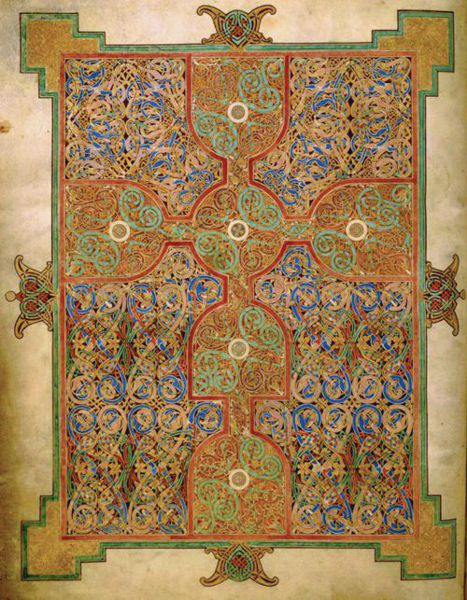
EADFRITH, BISHOP OF LINDISFARNE (died 721)
'Illuminated Ornamental Cross', 715-721, Lindisfarne Gospels
The Lindisfarne Gospels were written and illuminated by the monk, Eadfrith, who became the bishop of Lindisfarne in 698. They were created in honour of God and St. Cuthbert, a celtic monk, who was bishop of Lindisfarne (685-86) on Holy Island and died in 687. This cross-carpet page is found at the beginning of St. Matthew's gospel. The complex interlacing of geometrical forms in this beautiful illuminated manuscript pays homage to God who was seen as the Great Geometrician of the Universe.
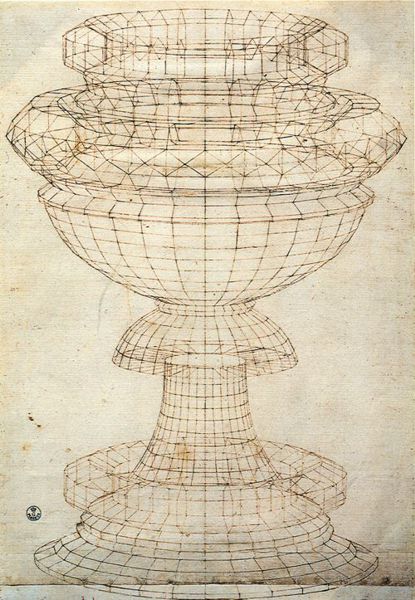
PAULO UCCELLO (1396-1475)
'Perspective Drawing of a Chalice', c.1450
Perspective, first developed by Brunelleschi around 1420, was a new drawing technique when Uccello produced this image. Today, this chalice is a strangely prophetic drawing because it seems to predict the use of wire frame images to visualize forms in 3D software, five and a half centuries later. Were the original designers of these programs influenced by this image?
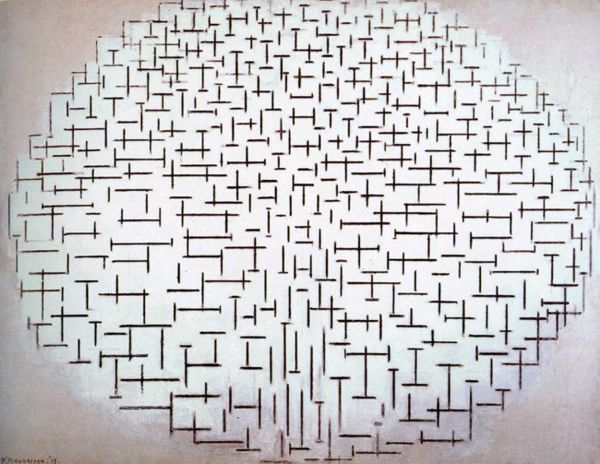
PIET MONDRIAN (1872-1944)
'Composition No.10 - Pier and Ocean', 1915 (oil on canvas)
The development of Mondrian's art is a methodical journey from realistic landscape and still life painting, through Expressionism and Cubism, to the total abstraction of the Dutch De Styjl movement. 'Pier and Ocean' is painted at a stage in the development of Mondrian's art where his work is approaching pure abstraction, but with a few realistic associations still present. He even gives the painting a double title: 'Pier and Ocean' offering a realistic interpretation of the image and 'Composition No.10' suggesting one of an abstract series of images. He aimed to, and eventually did, create an international language of pure color and abstract form which became known as Neo-Plasticism. This style, which formed the foundation of the Dutch De Styjl movement was based on the delicate balancing of rectangular forms within a horizontal and vertical grid, and painted from a restricted palette of primary colors with black and white.
'Pier and Ocean' was created on the road to this purist style. It is a painting of an abstract grid within an oval field. This is a compositional format that Mondrian borrowed from Cubist still lifes. Like the Cubist images, it balances both realistic and abstract elements. Mondrian believed that vertical lines expressed male elements in his work, while horizontal lines characterized the female side. In this painting, he combines both into an abstract rhythm that suggests the shimmering light of the sea. The ‘Pier’, which is constructed with longer (male) verticals, projects into the 'Ocean' whose rhythm expands in a network of (female) horizontals. Both elements contrast more in the lower half of the work but gradually come together and unify at the top of the picture. A sense of space and distance is achieved by the gradual change in the scale and frequency of the lines. This creates the illusion that they are receding towards a horizon.
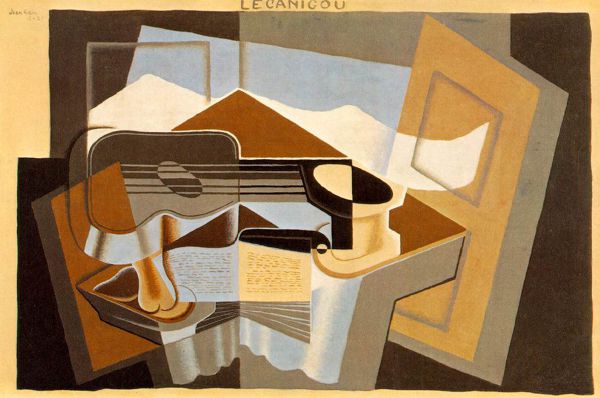
JUAN GRIS (1887-1927)
'Le Canigou', 1921 (oil on canvas)
This image by Juan Gris is an example of Synthetic Cubism, a later and more decorative development of the Cubist style. Cubism was an attempt by artists at the beginning of the 20th century, to revitalize the tired traditions of Western art which they believed had run their course. They challenged conventional forms of representation, such as perspective, which had been the rule since the Renaissance. Their aim was to develop a new way of seeing which reflected the modern age.
Perspective only works from one fixed viewpoint. The Cubists believed that this was a limited visualization technique that did not reflect the way we see the world. In Cubist painting the artist depicts real objects, but not from a fixed viewpoint. They portray and combine many viewpoints of the subject at one time. The whole idea of space is rearranged – the front, back and sides of an image become interchangeable elements. Cubist images combine the artist’s observation with their memory of the subject which are fused together to create a poetic evocation of the theme. The title of this work is the name of the snow clad mountain that can be viewed through the window.
Still life was the most popular of the Cubist themes. It allowed the use of everyday objects whose forms were still recognizable after their simplification and stylization.
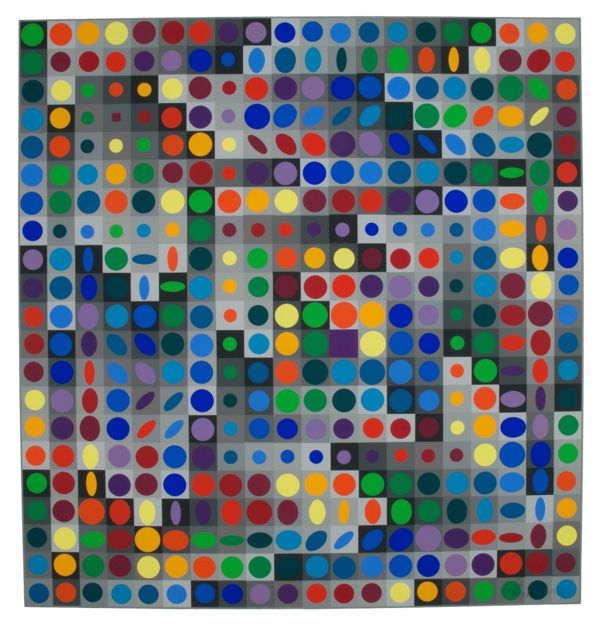
VICTOR VASARELY (1906-1997)
'Planetary Folklore', 1964 (silkscreen print)
Victor Vasarely was the major figure of the Op Art movement. He produced many paintings that were based on a visual vocabulary of geometric shapes and colors which he configured in a series of arrangements designed to stimulate a strong optical response in the viewer.
In this silkscreen print, Vasarely creates a dynamic field of shifting relationships between two grids: one is the background - a network of graduating grayscale squares; the other is the foreground - a matrix of colored circles and ellipses. The viewer instinctively scans this formal structure for some sense of order that is initially suggested by the progressive tones in grayscale background. However any perceived system is contradicted by the counterpoint of the colored shapes. This shifting relationship between foreground and background builds up an undulating surface that offers no point of rest for the eye, ultimately forcing the viewer to engage with the overall image - a pulsating plane of visual energy.

